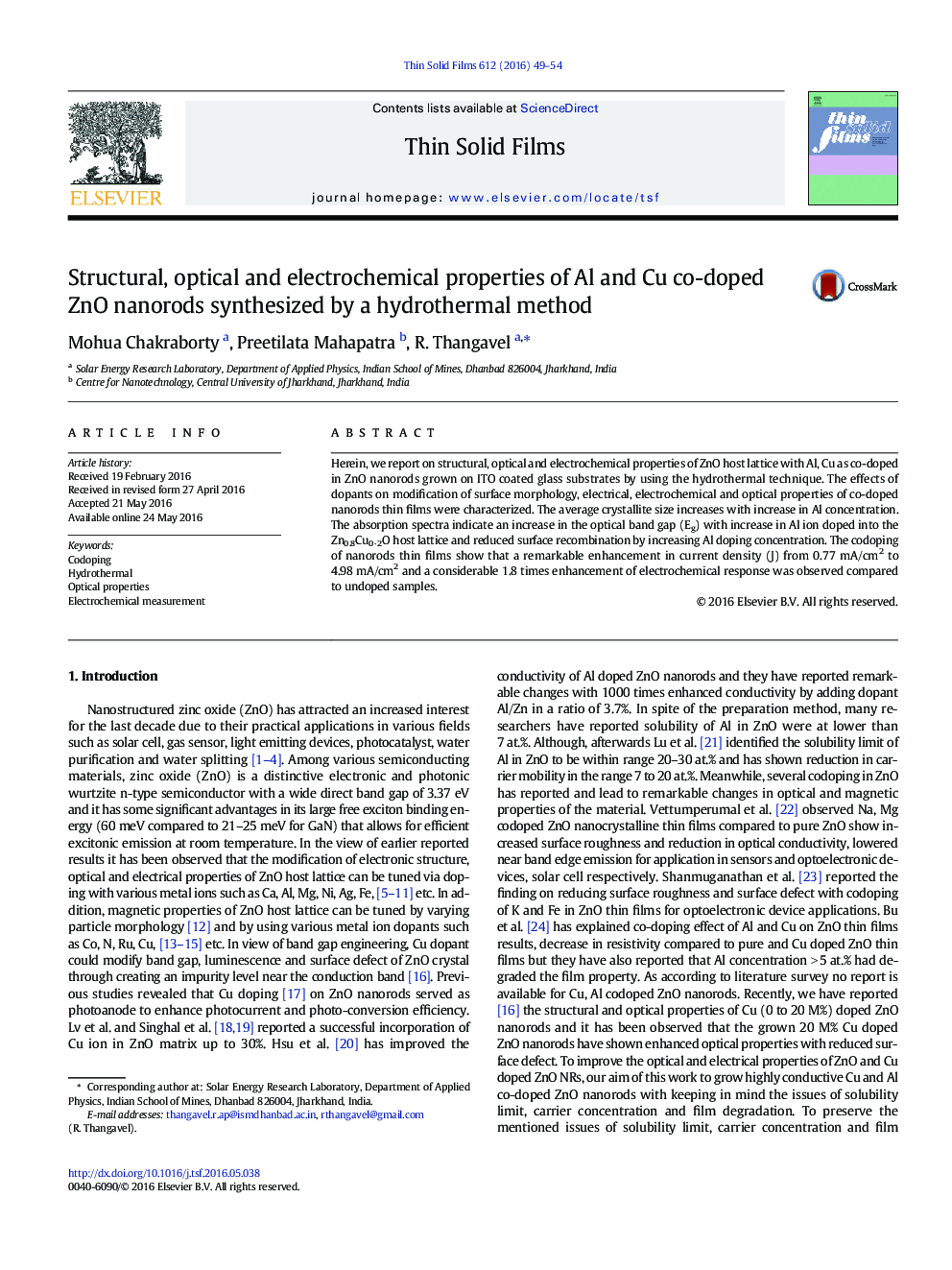| Article ID | Journal | Published Year | Pages | File Type |
|---|---|---|---|---|
| 1663895 | Thin Solid Films | 2016 | 6 Pages |
•The Cu, Al codoped ZnO nanorods were grown by sol-gel and hydrothermal method.•The grown nanorods were vertically well aligned and of very dense hexagonal array.•Codoping exhibit change in band gap compared to Cu doped and undoped ZnO nanorods.•The increase of conductivity is caused by extra electron carrier with codoping.•Electrochemical measurements confirm applicability in photoelectrochemical cells.
Herein, we report on structural, optical and electrochemical properties of ZnO host lattice with Al, Cu as co-doped in ZnO nanorods grown on ITO coated glass substrates by using the hydrothermal technique. The effects of dopants on modification of surface morphology, electrical, electrochemical and optical properties of co-doped nanorods thin films were characterized. The average crystallite size increases with increase in Al concentration. The absorption spectra indicate an increase in the optical band gap (Eg) with increase in Al ion doped into the Zn0.8Cu0·2O host lattice and reduced surface recombination by increasing Al doping concentration. The codoping of nanorods thin films show that a remarkable enhancement in current density (J) from 0.77 mA/cm2 to 4.98 mA/cm2 and a considerable 1.8 times enhancement of electrochemical response was observed compared to undoped samples.
